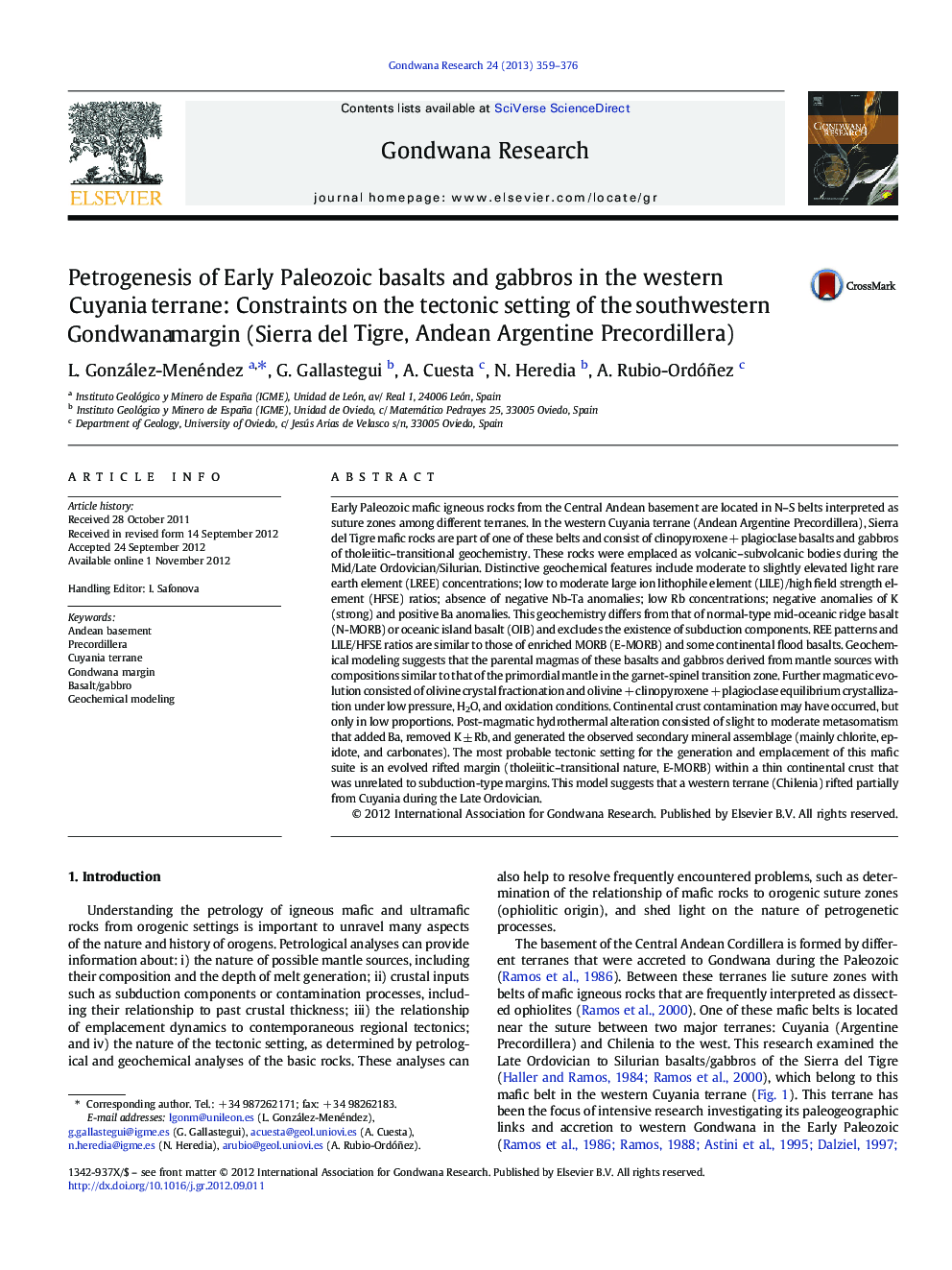| کد مقاله | کد نشریه | سال انتشار | مقاله انگلیسی | نسخه تمام متن |
|---|---|---|---|---|
| 4727048 | 1356358 | 2013 | 18 صفحه PDF | دانلود رایگان |

Early Paleozoic mafic igneous rocks from the Central Andean basement are located in N–S belts interpreted as suture zones among different terranes. In the western Cuyania terrane (Andean Argentine Precordillera), Sierra del Tigre mafic rocks are part of one of these belts and consist of clinopyroxene + plagioclase basalts and gabbros of tholeiitic–transitional geochemistry. These rocks were emplaced as volcanic–subvolcanic bodies during the Mid/Late Ordovician/Silurian. Distinctive geochemical features include moderate to slightly elevated light rare earth element (LREE) concentrations; low to moderate large ion lithophile element (LILE)/high field strength element (HFSE) ratios; absence of negative Nb-Ta anomalies; low Rb concentrations; negative anomalies of K (strong) and positive Ba anomalies. This geochemistry differs from that of normal-type mid-oceanic ridge basalt (N-MORB) or oceanic island basalt (OIB) and excludes the existence of subduction components. REE patterns and LILE/HFSE ratios are similar to those of enriched MORB (E-MORB) and some continental flood basalts. Geochemical modeling suggests that the parental magmas of these basalts and gabbros derived from mantle sources with compositions similar to that of the primordial mantle in the garnet-spinel transition zone. Further magmatic evolution consisted of olivine crystal fractionation and olivine + clinopyroxene + plagioclase equilibrium crystallization under low pressure, H2O, and oxidation conditions. Continental crust contamination may have occurred, but only in low proportions. Post-magmatic hydrothermal alteration consisted of slight to moderate metasomatism that added Ba, removed K ± Rb, and generated the observed secondary mineral assemblage (mainly chlorite, epidote, and carbonates). The most probable tectonic setting for the generation and emplacement of this mafic suite is an evolved rifted margin (tholeiitic–transitional nature, E-MORB) within a thin continental crust that was unrelated to subduction-type margins. This model suggests that a western terrane (Chilenia) rifted partially from Cuyania during the Late Ordovician.
Figure optionsDownload as PowerPoint slideHighlights
► Late Ordovician basalts occur in the Cuyania terrane, southern Gondwana.
► Similar to E-MORB, no subduction components and minor crustal contamination.
► Intruded in a rifted continental crust that was the southwestern margin of Gondwana.
Journal: Gondwana Research - Volume 24, Issue 1, July 2013, Pages 359–376